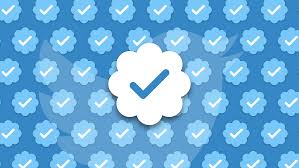While Twitter’s stalled profile verification system remains a confusing mess, the blue profile tick still conveys a sense of authority on Twitter and can help to amplify messaging from those that have it.
This week, New York Times writer Jennifer Senior raised an entirely valid question around verification in relation to the COVID-19 pandemic.
Hey, @jack: Is there a reason why esteemed epidemiologists and contagion experts and virologists like @NAChristakis, @mlipsitch, @trvrb, and @florian_krammer aren’t verified, while verified kooks are still spreading misinformation? They’re indispensable voices right now. Thanks.
That got Twitter CEO Jack Dorsey’s attention, and within a day, Twitter confirmed that it was working to action such, and get relevant experts in the field verified as soon as possible.
PSA about what we’re doing to Verify Twitter accounts that are providing credible updates around #COVID19: we are working with global public health authorities to identify experts and have already Verified hundreds of accounts, but there’s more to do and we could use your help.
Twitter has additionally called on relevant experts to add an email address “associated with an authoritative organization or institution” to their Twitter account and to ensure that their profile bio references and links to the institution that they’re associated with.
Twitter has additionally noted that it’s considering a way to action profile verification based on public recommendations amid the pandemic, but right now, it’s prioritizing suggestions from global public health authorities and partners.
It’s a good move from Twitter, though, at the same time, even the process here underlines the platform’s broken verification system.
As noted in the initial tweet (above) from Senior, some verified profiles on the platform have been sharing misinformation around the outbreak, meaning that Twitter has inadvertently been giving more weight to false narratives and hoaxes simply by not fixing its verification system.
The question then is how does Twitter fix it? Should Twitter look to revoke the blue checkmark from users who’ve previously been approved based on their actions? And if that’s the case, where do you draw the line? I know of some verified users who, in my opinion, are not credible sources, but they’re not necessarily sharing misinformation, as such. Does Twitter need to implement new rules around what would lead to a removal of the verified tick?
And then there’s the actual actioning of any such changes. Twitter already has plenty of moderation concerns to deal with – and even more so right now given that it’s had to send its human moderation teams home amid COVID-19 changes. A mass review of its previously approved verifications would further add to that. Twitter could look to action such based on individual user reports, but would that be enough to fix the system? Will it help to instill trust in Twitter’s verification process if some people who likely don’t deserve the blue tick still have it?
The core problems with the process seemingly stem from past miscommunication inside Twitter as to what the blue verification tick actually means. Is it to help recognize public figures? Amplify authoritative voices? And in either case, what’s the threshold on each? Does follower count, for example, play a role?
Given all of these considerations, it’s clear that Twitter’s verification system isn’t going to be fixed anytime soon, but still, it’s good to see Twitter taking action on this front, and working to recognize authoritative voices that are sharing accurate, helpful information on the COVID-19 outbreak.
Maybe, once this is all over, verification will get renewed focus from Jack and Co.
